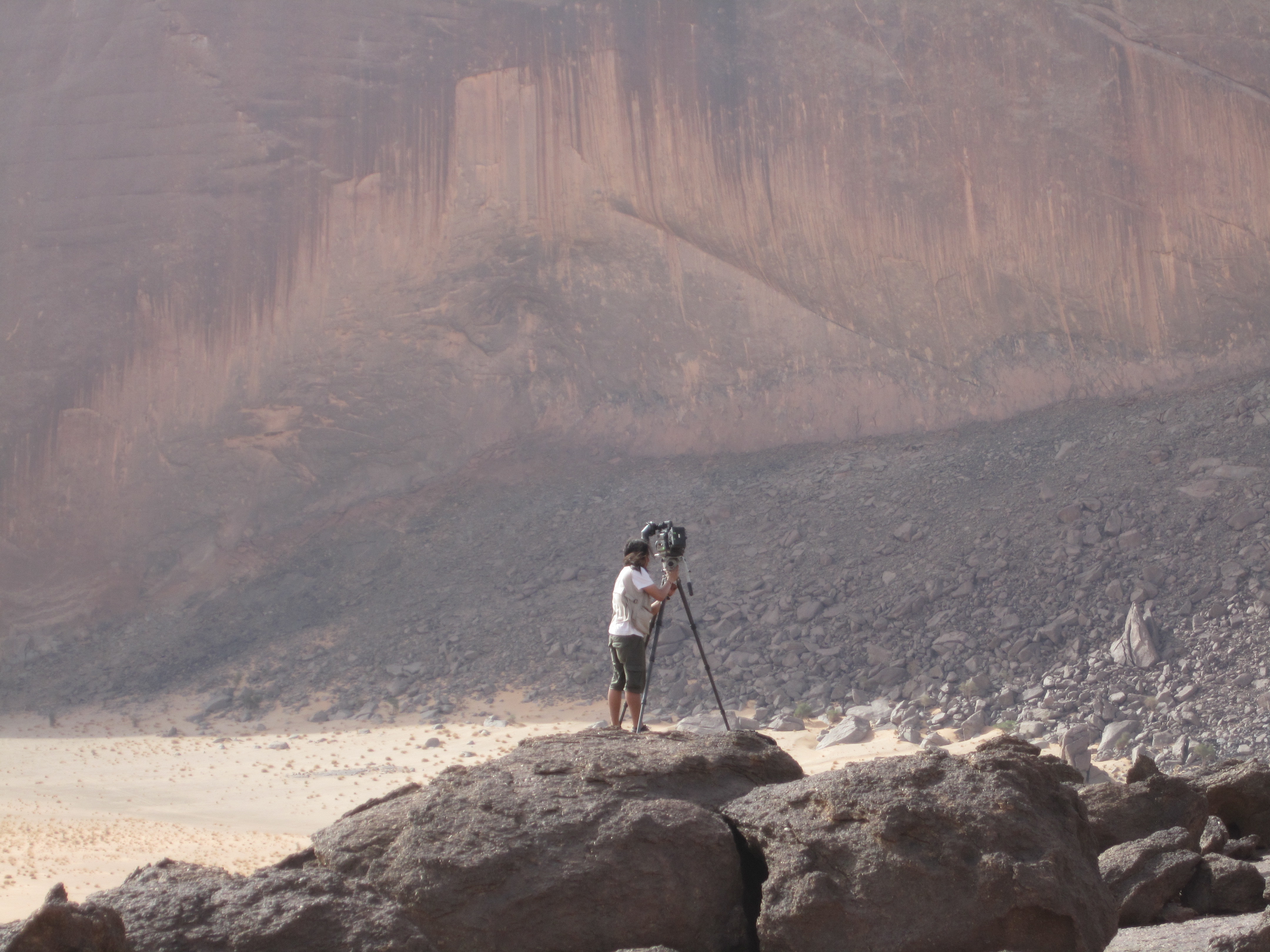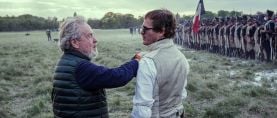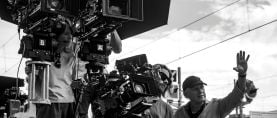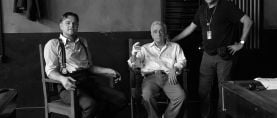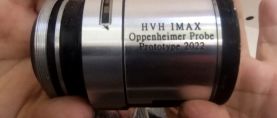
Photographing The Mauritania Railway: Backbone of the Sahara
Shot with a Sony CineAlta F35 under hellish conditions, this poetic short documentary delivers an epic view of a little-seen, distant and dusty corner of the world.
Built to transport iron ore reserves from Mauritania across the Sahara Desert, the 704-kilometer Mauritania Railway connects the mining center of Zouerat to the port city of Nouadhibou on Africa’s Atlantic coast. Directed and photographed by Miguel de Olaso — a.k.a. MacGregor — The Mauritania Railway: Backbone of the Sahara is a documentary film that chronicles the journey of Malick, a 27-year-old merchant who relies on the train for his livelihood, even as he risks his life every time he climbs aboard. Death from falls is common — and daytime temperatures frequently exceed 100°F — but the train is a lifeline for Malick and the families that live along the railway’s path.
Here’s the complete film:
During its festival run, The Mauritania Railway earned the top prize for cinematography at the XVI International Film Festival of Almeria, and the jury prize for stylistic achievement and best cinematography at the Social Impact Media Awards 2018. The film has screened at the Full Frame Documentary Film Festival, the Moscow International Documentary Film Festival DOKer, the 41th Grenzland-Filmtage in Germany, and Cortoespaña, among others.
Here, MacGregor discusses his creative approach to the project and the tools he and his small crew employed while shooting in the sun-baked Sahara.

American Cinematographer: How did the idea to do a film about the Mauritania Railway come about?
MacGregor: I wanted to shoot and direct a self-financed passion project, something with a feature-film quality, but with real people and a real setting. I got in touch with my friend Antonio Aguilar, an experienced travel journalist, and we started talking about shooting a small documentary between the border of India and Tibet, but the permits were difficult to obtain so we tried exploring other options. He had also mentioned the Mauritania Railway, and had actually been on that train. I thought it would be crazy but fun, so we decided to go for it. I put together a small crew, and we ended up being a group of four: our travel expert Antonio Aguilar, our sound guy Julio Cuspinera, camera assistant Adrian Hernandez, and myself shooting and directing.
How did you plan for the shoot?
Preproduction was figuring out mostly transportation: where we would book a car or ride the train. We had to get vaccinated, get visas and permits. It wasn’t a demanding preproduction because it was just four people. With just four people we could keep things low-key because we wanted to pass for merchants riding on top of the train.

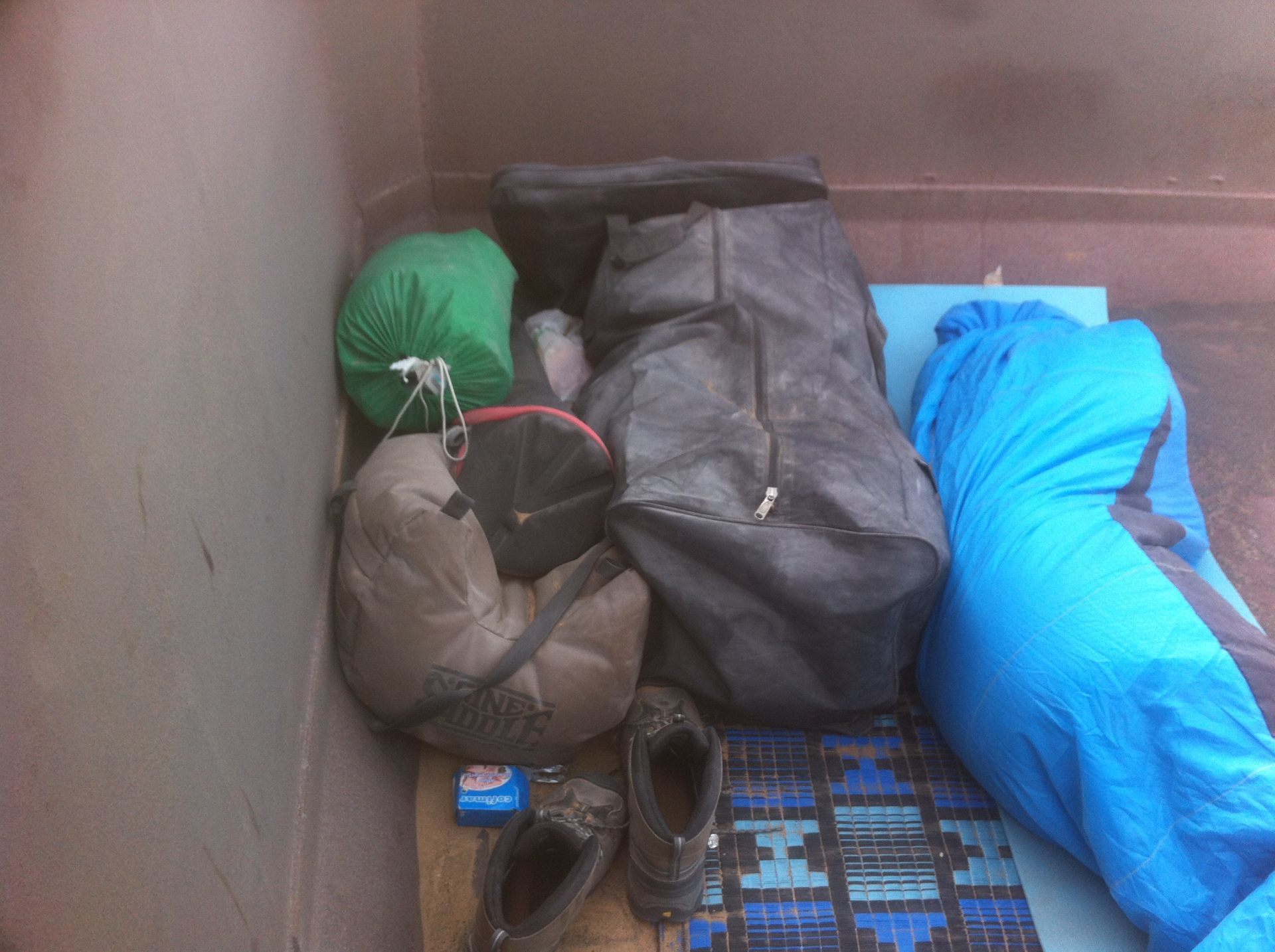

When did you make your first trip?
We started planning in April of 2013 and spent all of July 2013 in Mauritania, going back and forth on the train to different cities, following different people. It’s crazy to see this super massive train crossing the desert in the middle of nowhere. And really, everything in Africa moves so slow, even simple things like going to the iron mines, which we officially had a permit for. Weeks passed and we never got the okay to go, so we had to leave the country without all the footage we wanted.
Over the next few months I started editing everything in my spare time in between shooting commercials, which is what I do to pay the bills. We were missing certain things, so we ended up going back exactly a year later in July of 2014, the hottest month, and spending three or four more weeks picking up a lot of the stuff we weren’t able to get on the first trip, like the shots at the mines, and the opening scene with the nomads and the dromedaries.
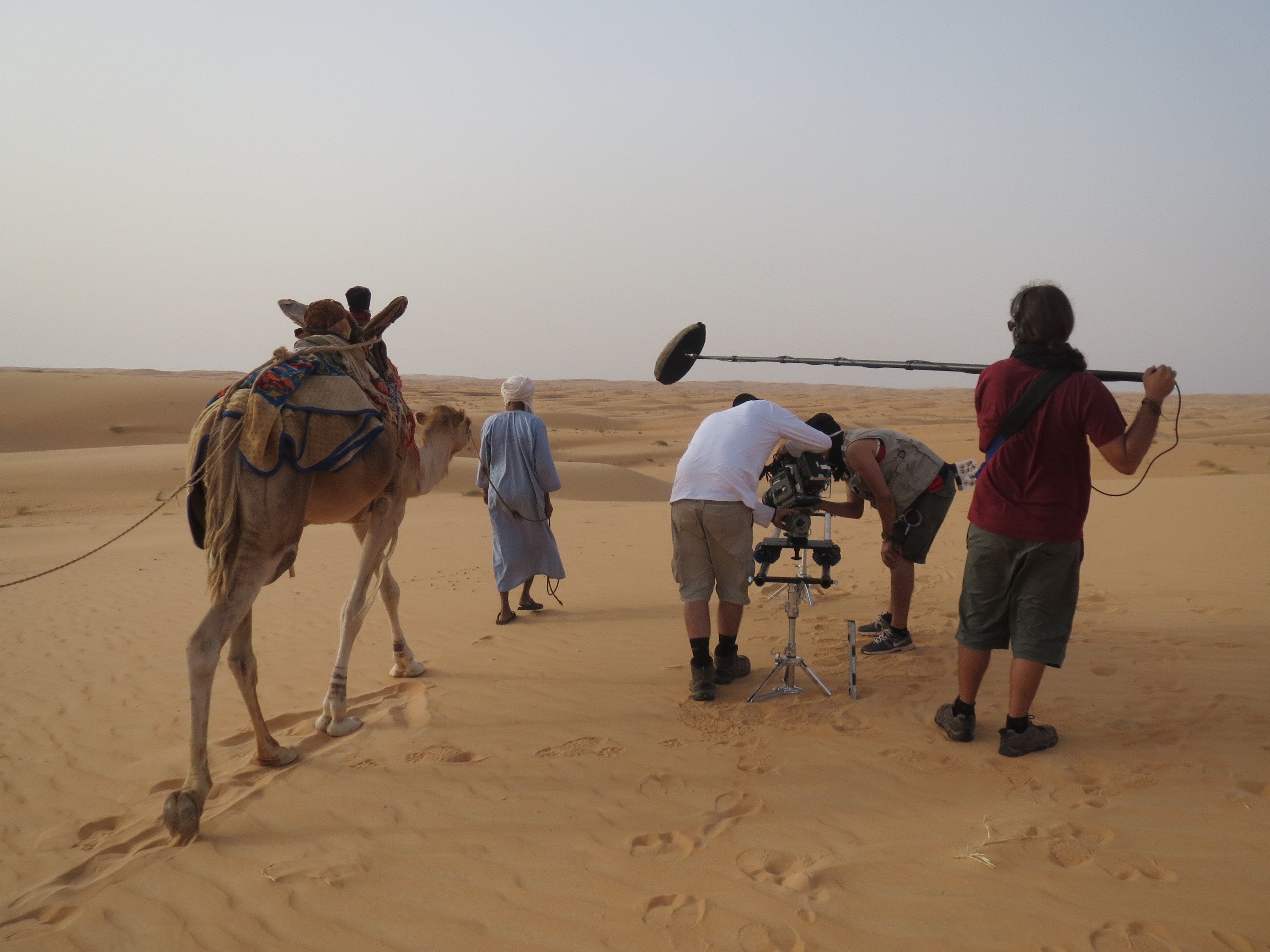
The film is punctuated by filmed portraits of the merchants and rural inhabitants of Mauritania. How did you go about getting these?
The merchants on top of the train were the easiest to work with because they were more accustomed to our technology, but the people deep in the desert were less familiar. I don’t think they quite understand the concept of a film camera, not even from a technical standpoint, but very basic stuff that we take for granted here in the west: I would place the camera and then ask them to walk with a camel left to right, and they would just go off in a completely different direction. Even things like looking at the camera, they don’t understand the concept of staying still so I can take a video portrait. To them, as long as we could see them, we could film them.
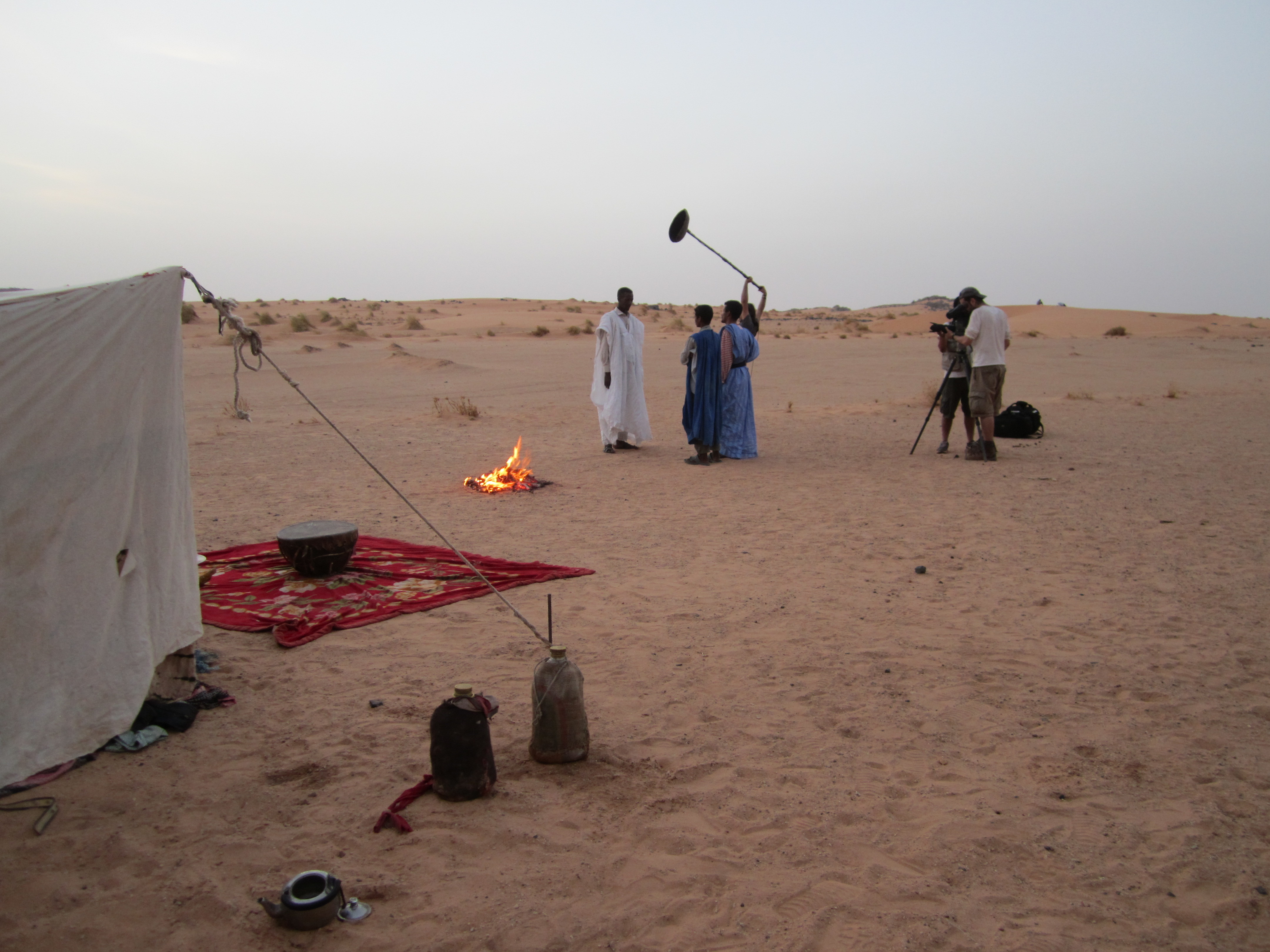
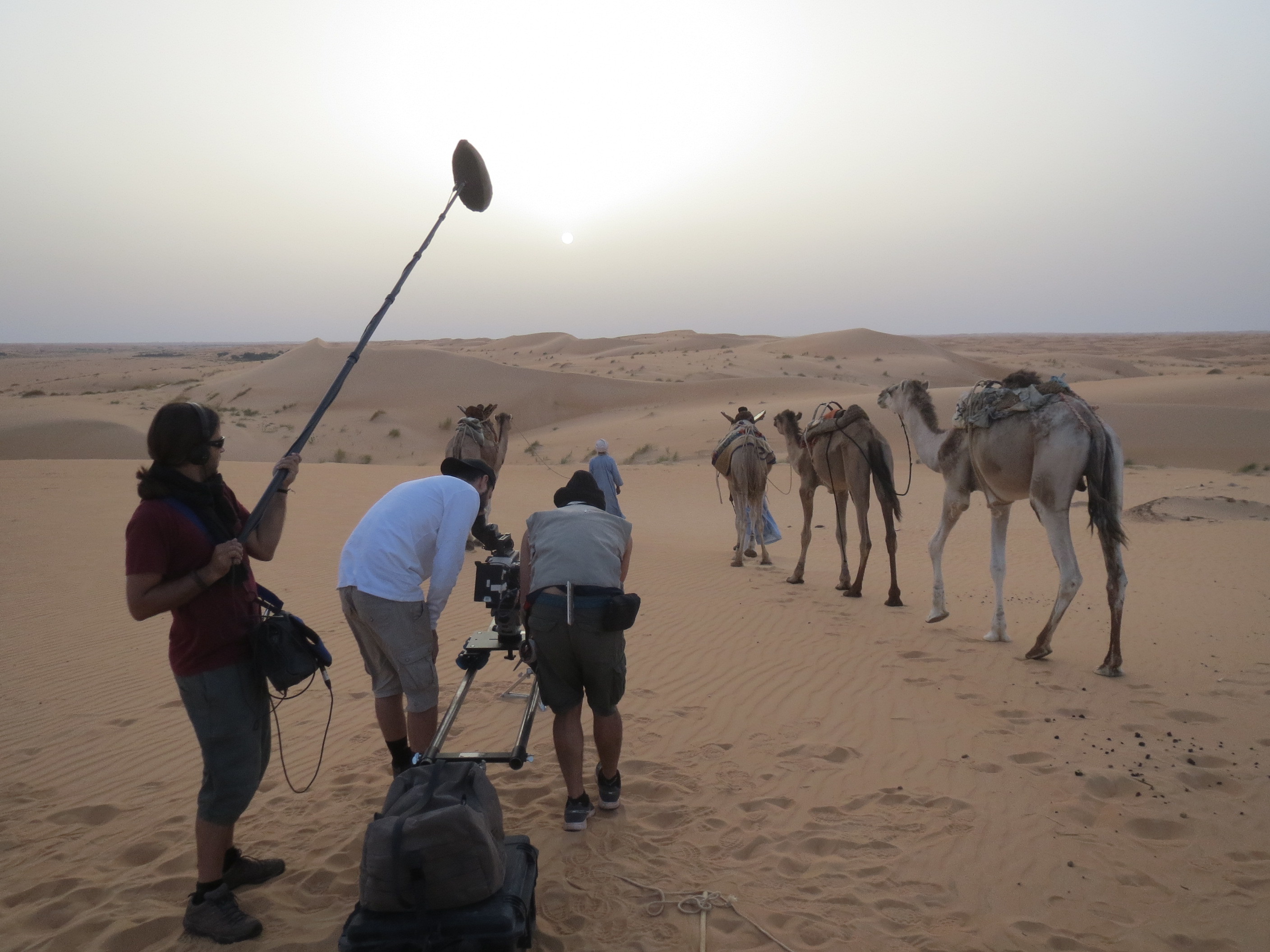
What camera did you use?
Back in 2012 or 2013, we could’ve gone with an early Alexa — which was very heavy — a Red Epic, or a Sony CineAlta F35, which was already a little bit of an older camera. I owned an F35, so that was an easy choice. The camera had to have a very cinematic, high-quality look. When the F35 was developed, they were still competing with film, so they wanted a camera that would intercut with film.
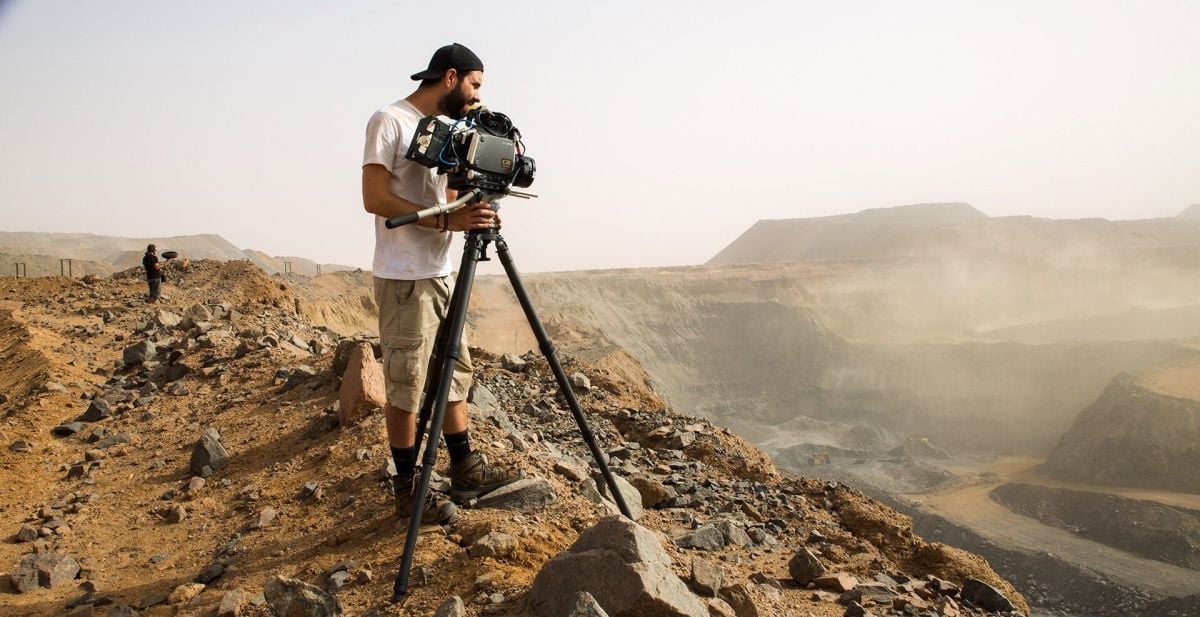
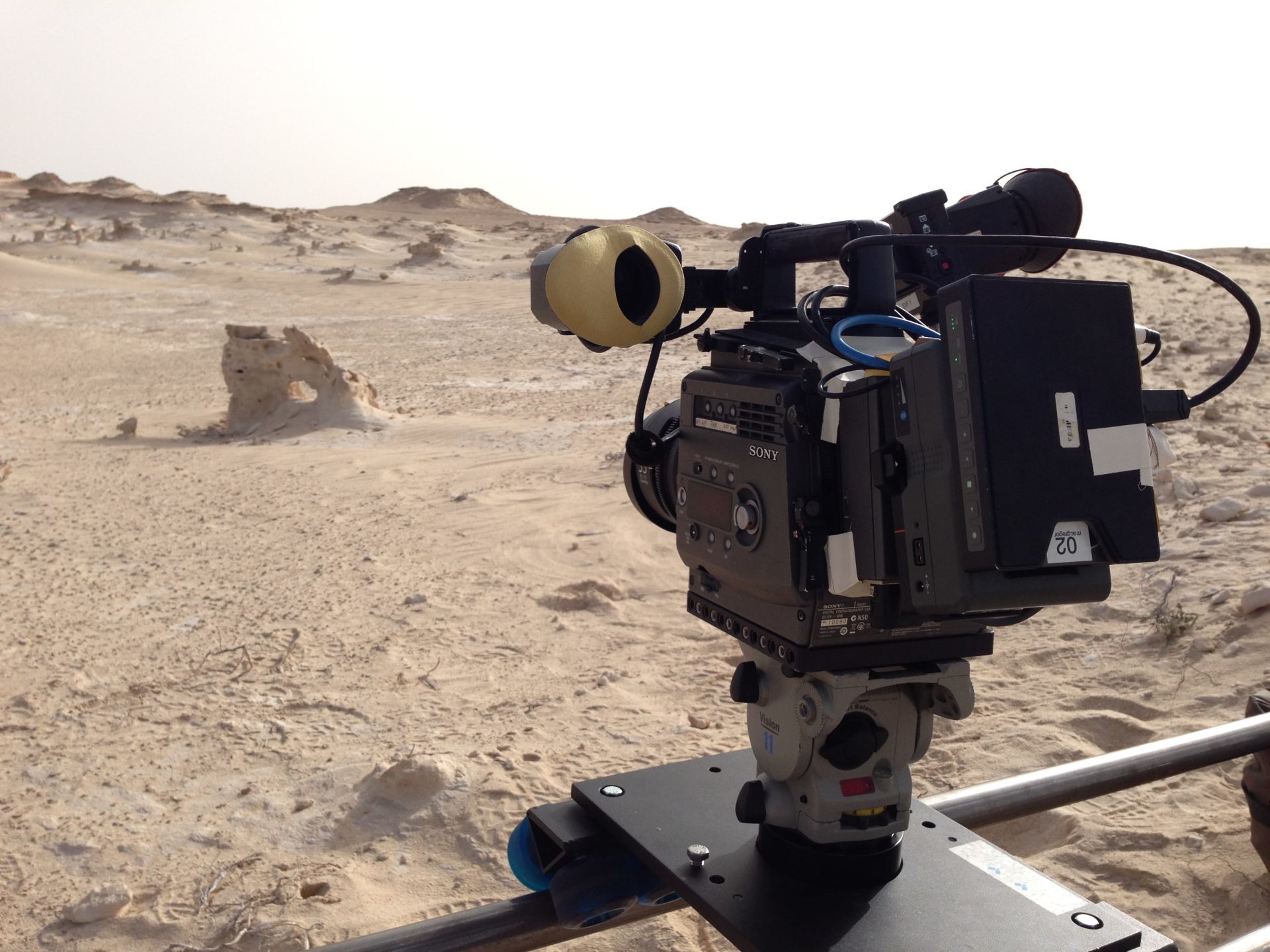
In my opinion, the Sony F35 doesn’t produce a saturated image, it still has a very nice roll off into the highlights. There’s not as much information in the shadows as there is with the Red, for example, but that makes it look more like film. And without the big SR-1 HDCAM SR module the F35 is smaller and lighter than the Alexa. It only does 1080p output, but it’s a super-clean, 12-bit 4:4:4 S-Log signal downrezzed from a super 35mm-size 5.7K CCD sensor, so it’s just about the sharpest 1080p you can think of, with a lot of dynamic range — 14-plus stops in my own tests.

I understand you modified the camera as well.
The F35 is natively PL mount, and while I had PL mount lenses, I didn’t want to take them into this harsh environment. They are in general also bigger and heavier, so I had the camera modified with a Nikon F-mount. Comparing a 50mm Master Prime to a 50mm Nikkor, the first is like five pounds and $25,000 and the other is two ounces and $500, and this meant a huge difference for our documentary. With cheaper photography lenses we would be able to get some decent extreme wide-angle and long telephoto lenses that I would not have been able to afford if I wanted them in PL mount. Also, we had to assume that all the gear we brought with us into the desert was going to get ruined.
Was it?
We lost a 50mm Nikkor lens but, surprisingly, everything else, after a lot of cleaning, ended up surviving. We had to take apart the whole F35 body and use compressed air to clean out the iron dust and sand, but it survived.
What lenses did you take with you?
It was a mishmash of everything. On the first trip I was able to bring a full set of lenses in a little bag, mostly modern Nikkor primes and DX zooms — for a cropped sensor — and F-mount Rokinon primes. We had the Nikkor lenses modified with gears so we could still use a follow focus. For the pick up shots on the second trip, I decided to switch to a PL mount front plate so I brought some Sony CineAlta PL mount primes and a PL-mount modified Carl Zeiss Jena Sonnar 135mm f/4, and a PL-mount modified Russian Tair 300mm.

How did you protect your and lenses against the elements?
With Tiffen IRND filters, which did in fact get scratched. We had to be careful when swapping lenses, as the sensor block would be exposed every time we did so, but I preferred the looks of the primes, so we did change lenses regularly. Any vent the camera had exposed we wrapped with these filters you can get for video projector fans, so the camera would still breathe [but be protected]. The iron dust was really bad on top of the train because it’s so fine that it gets everywhere. Then you’ve got the sand and the sandstorms.

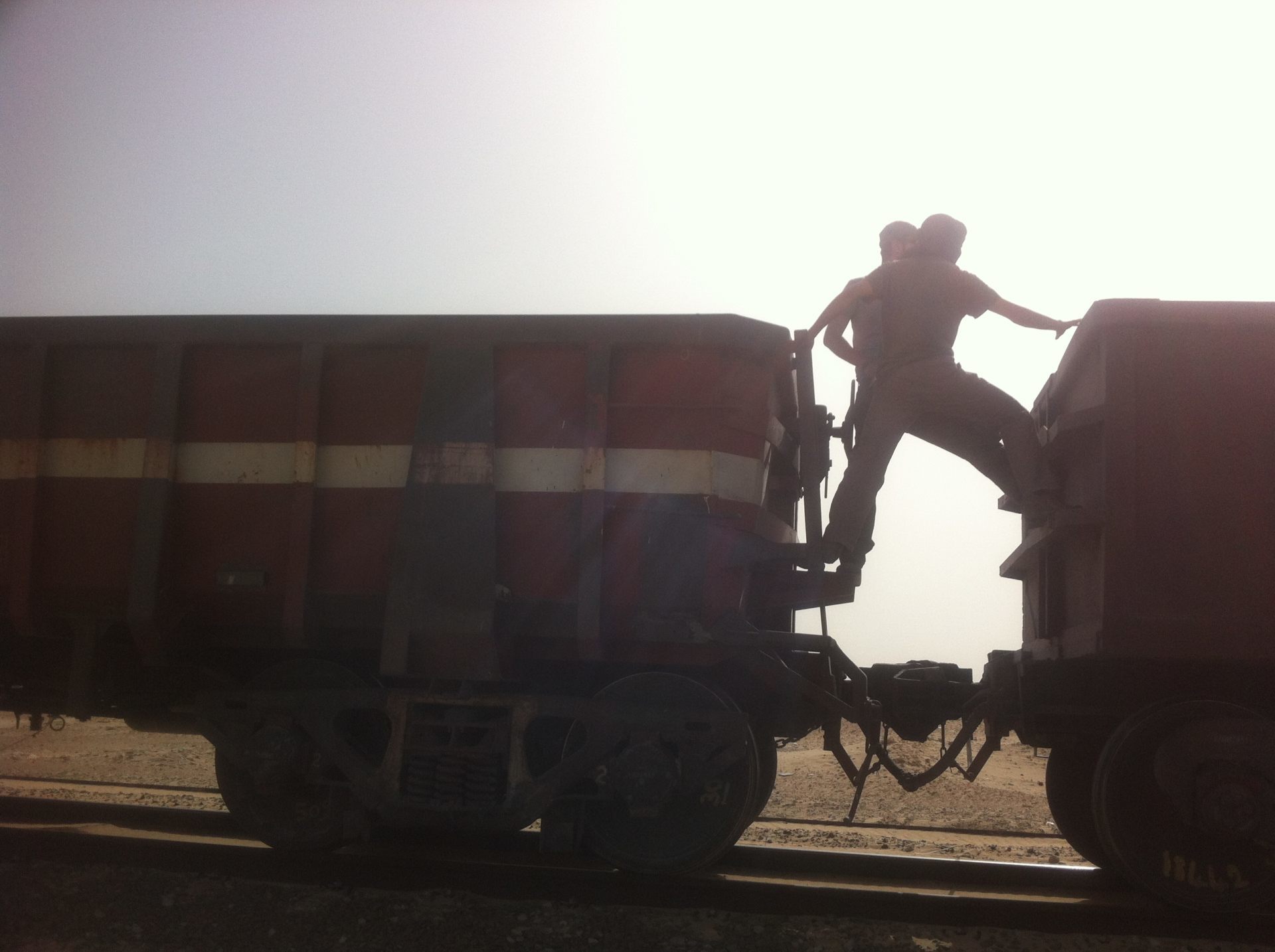
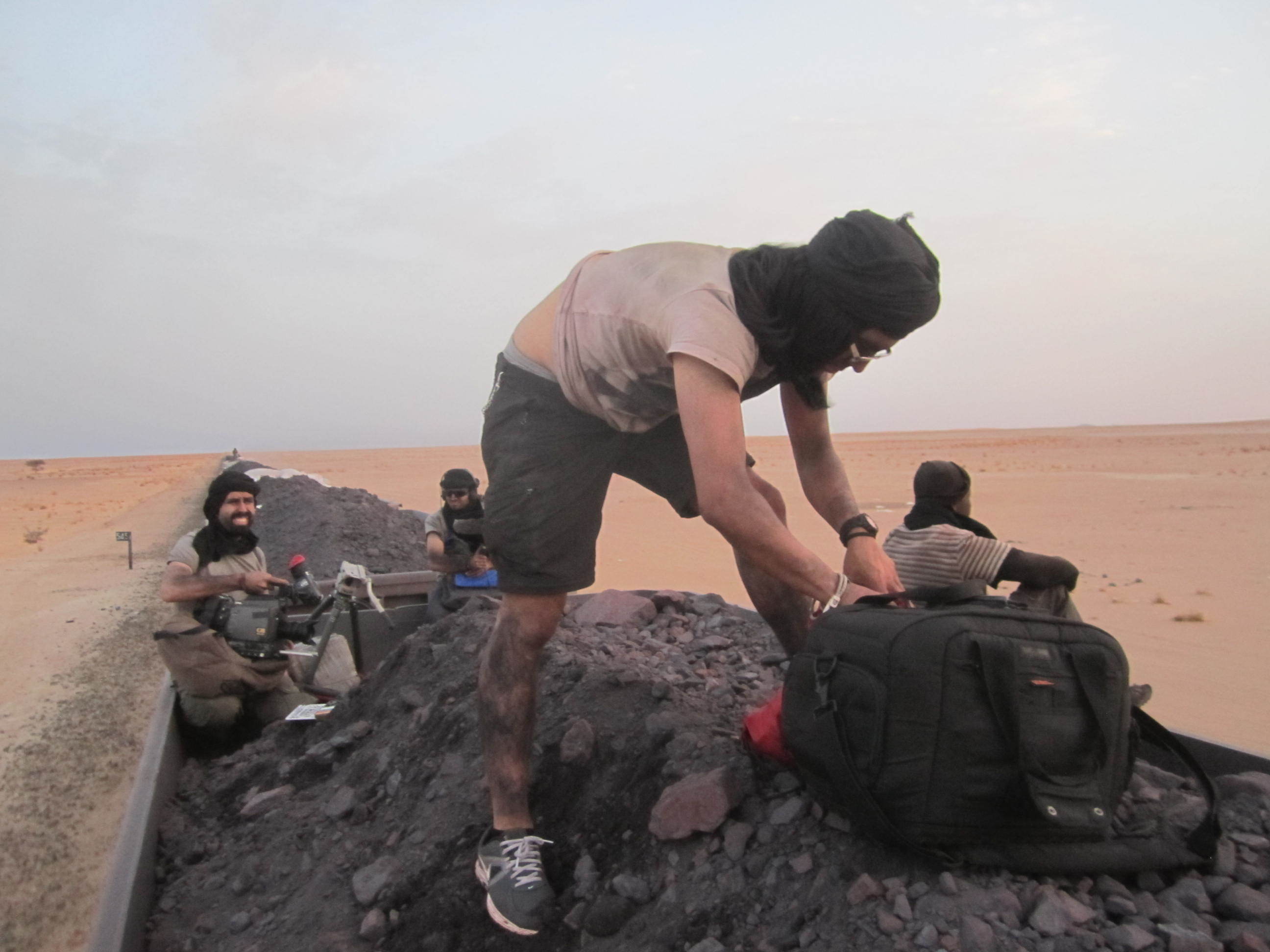
What other filters did you use?
Tiffen polarizers, and a .6 grad. No other filters whatsoever. We shot everything super clean to get the footage looking good straight out of the camera with proper exposure. We had a matte box but didn’t use that very much, because it just made things heavier and more complicated.
What other equipment did you bring with you?
We had a Gitzo carbon-fiber tripod with a Vinten 11 fluid head, a Dana Dolly, and a CineSaddle. What we used really just depended on where we were. It was almost impossible to shoot on top of the train because it rattled so much, but the CineSaddle absorbed a lot of the vibrations. We used the Dana Dolly for the opening shots of the train rolling across the desert. There were no good drones back then, it would’ve been great to have one. All of our aerial shots are actually satellite images that we sourced from stock footage catalogues online.
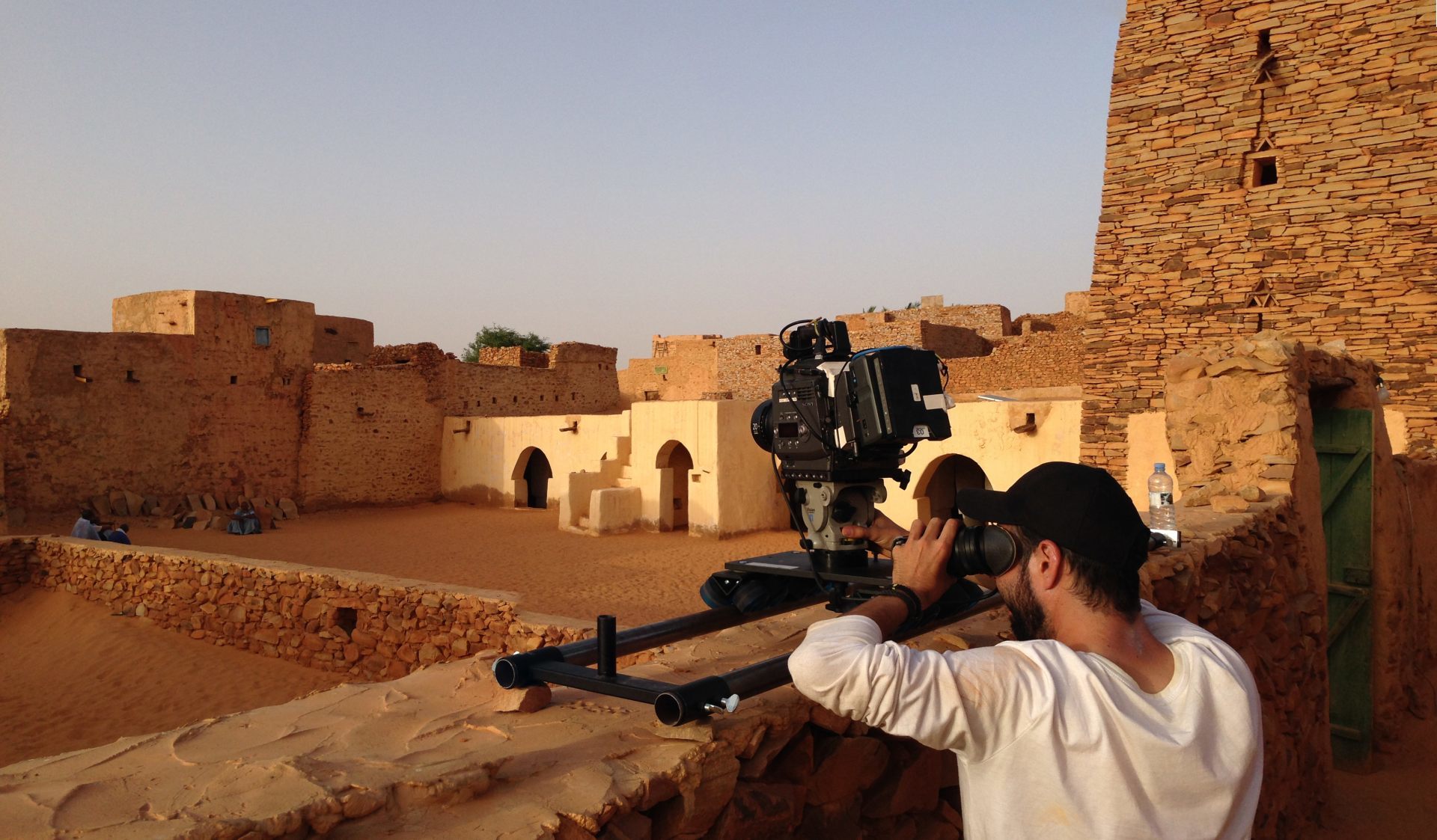

Did you bring any lights?
We brought one light, a 1' x 1' V-mount battery-powered bi-color LED panel, which we used for the very last scene in the documentary with the people singing by the fire. It got pretty destroyed after the trip.
How did you monitor your exposure?
When you’re shooting in S-Log the camera ISO is automatically set to 450, so that’s what we used. I wanted a large format feel to this so we shot mostly around T1.8 to T2. Except for some of the longer lenses that were f2.8 or 4. Our focus puller used a small Zacuto EVF Pro 3.2" external monitor, but the exposure on the Sony [HDVF-C30WR 2.7"] viewfinder is super-accurate, which means if it looks good in the viewfinder, there’s no doubt the recording will look good. While the camera output is in S-log, the EVF image has a 709 LUT — technically a hypergamma, I believe — applied to it, which helps a lot for framing and exposure. I still carry a light meter, but it doesn’t do 450 ISO, so if I was checking high-key, contrasty exposure I would rate it at 500, but, otherwise, I would go for 400.
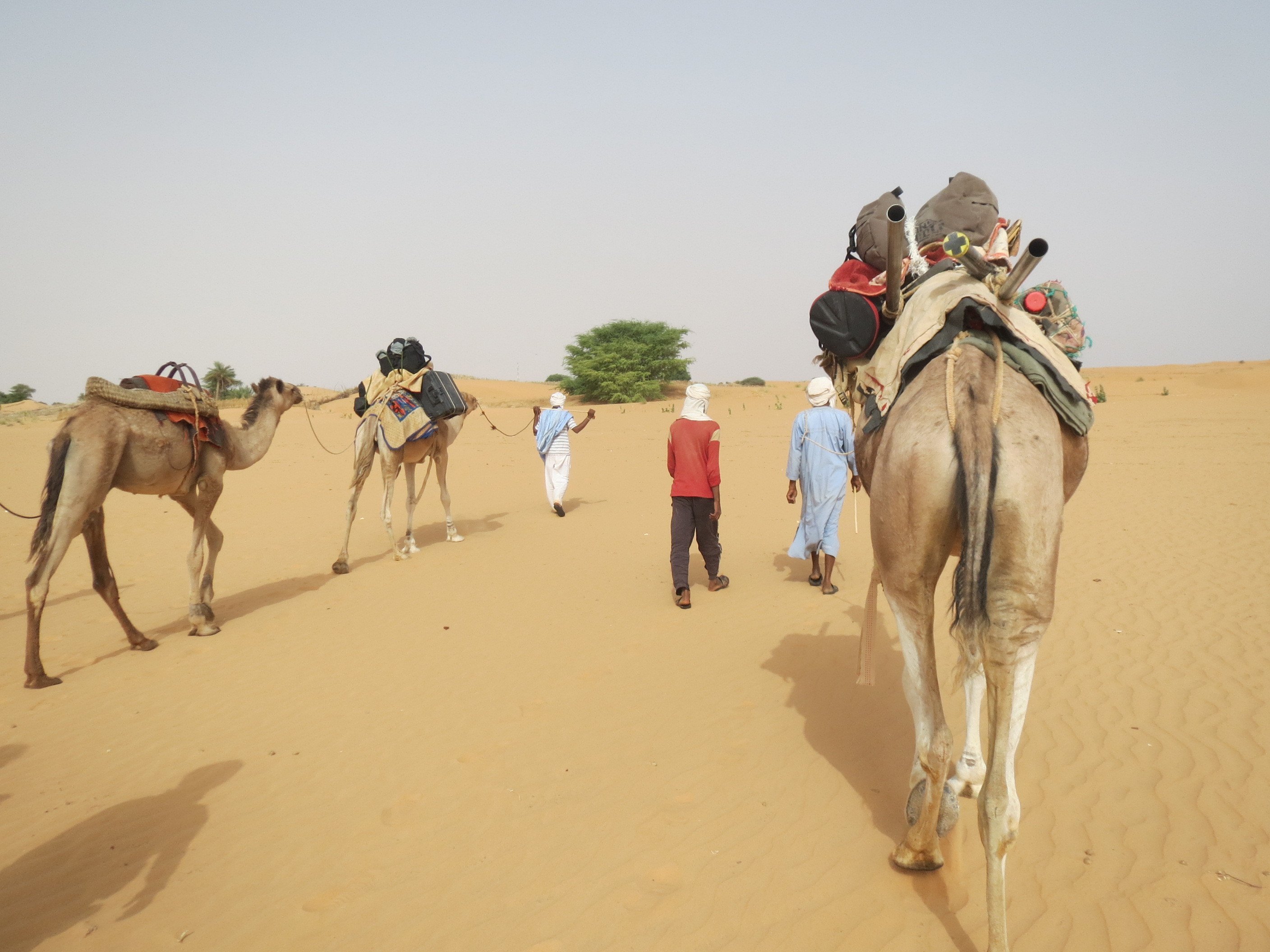
What did you use to record the image?
We had a Blackmagic HyperDeck Shuttle solid-state recorder to capture the camera’s uncompressed SDI signal in 10-bit 1080p ProRes HQ 422, and we backed up everything on four SSD drives. In post we processed all the footage as DPX files because the camera output goes up to 107 IRE, but ProRes HQ is a limited range codec, so there was a full stop in the highlights that wasn’t accessible unless we were using DPX or other full-range codec.
How much footage did you come back with?
Something like eight hours from the first trip and about four or five hours from the second one. Just for the 12 minutes.

How did you sort through all that footage?
I edited with Sony Vegas because I’m really fast with that program, and it’s great for sound as well. I conformed the project in DaVinci Resolve and did the color grade myself. I chose to apply a Kodak 2383 print emulation LUT on the output node to get denser shadows and that cinematic style that I thought the footage deserved. The F35 only has two white balance settings — tungsten and daylight — so there was more color timing to match one shot with the next than actual grading. All compositing was done in Adobe After Effects.
What kind of compositing did you do?
For a couple shots we made two exposures, then merged them together like a poor-man’s HDR. The F35 has a CCD sensor with a global shutter, which helps reduce wobble when the camera pans or shakes, but we still had to do some stabilization in post for the shots on top of the train and because wind was an issue for the long lenses [creating vibration]. Also, the camera does 50p but the HyperDeck does not let you go past 30p, so, for the slow-motion shots, we captured in 50i and then interpolated to 50p in After Effects.

I understand that The Mauritania Railway is just one chapter of an intended series. What's the bigger picture here?
The Mauritania Railway is the pilot for Colliding Worlds, a new, eight-chapter series that we’re producing and for which we’re seeking financing.
Our goal for this series is to find the beauty in some of the most remote, harsh — some would even say ugly — places on the earth. Some of these places are geographically remote, such as the Mauritania Railway, while others might be in the middle of huge megacities and yet offer a glimpse into a way of life that’s completely foreign to the average viewer’s imagination. Regardless, it’s safe to say that viewers would find all of these places pretty difficult environments in which to live or travel, which is why we go there on their behalf and show that life goes on in these places in some pretty beautiful and fascinating ways.
The people who live in these places have their own very specific cultures that have developed around the struggles they face and the ways they approach life. The outside world, however, is always pushing in on these people and this brings both opportunities as well as new challenges. The Mauritania Railway, for example, is a connection to the outside world — for food, supplies, and information — for these isolated desert cultures, but no one would argue that the train hasn’t changed the traditional way of life for the people who have come to rely on it.
